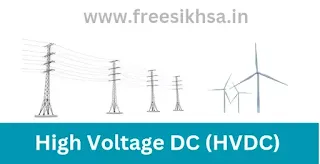What is high voltage DC (HVDC)
High Voltage DC Switch :
A high voltage DC (HVDC) switch is a device that is used to control the flow of electricity in a high voltage direct current transmission system. HVDC transmission systems use direct current to transmit large amounts of electricity over long distances, typically between different regions or countries.
In an HVDC system, the HVDC switch is used to connect or disconnect different sections of the transmission line, as well as to control the direction of the flow of electricity. The switch typically consists of high-voltage semiconductors, such as insulated-gate bipolar transistors (IGBTs) or thyristors, which can handle high voltages and currents.
The use of HVDC switches in transmission systems has several advantages over traditional AC transmission, including lower energy losses, increased transmission capacity, and the ability to connect renewable energy sources, such as offshore wind farms, to the grid. HVDC switches also allow for the creation of "meshed" supergrids, which provide multiple transmission paths between different regions and countries, making the grid more resilient and reducing the risk of power outages.
Overall, HVDC switches play a critical role in the construction and operation of high voltage DC transmission systems, and are a key component in the expansion of renewable energy and the transition to a more sustainable energy system.
High Voltage DC Switch Enables Supergrids for Renewable Energy
High voltage DC (HVDC) switches can enable the creation of supergrids for renewable energy. Supergrids are large-scale electricity transmission networks that connect multiple regions and countries, allowing them to share renewable energy resources and balance their electricity demand and supply.
HVDC technology is particularly well-suited for long-distance, high-capacity transmission of renewable energy because it can transport electricity over greater distances with less energy loss compared to traditional alternating current (AC) transmission. HVDC systems can also be more easily integrated with renewable energy sources, such as offshore wind farms and solar power plants.
In addition, HVDC switches can enable the creation of "meshed" supergrids, which provide multiple transmission paths between different regions and countries, making the grid more resilient and reducing the risk of power outages.
Overall, the use of HVDC switches in supergrid construction can help promote the expansion of renewable energy and support the transition to a more sustainable, low-carbon energy system.


